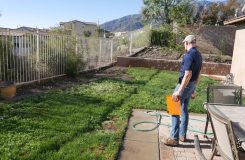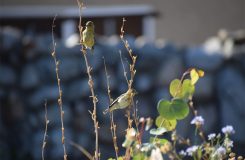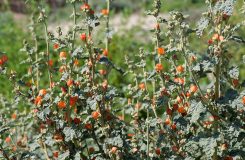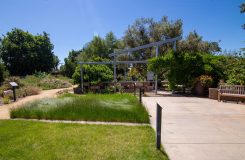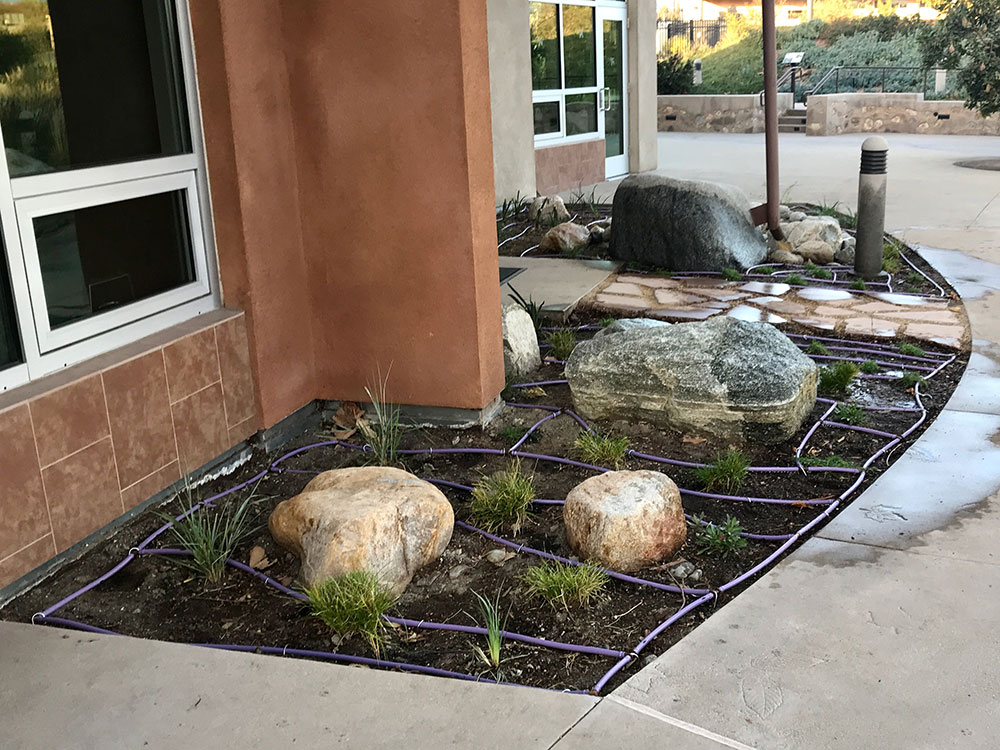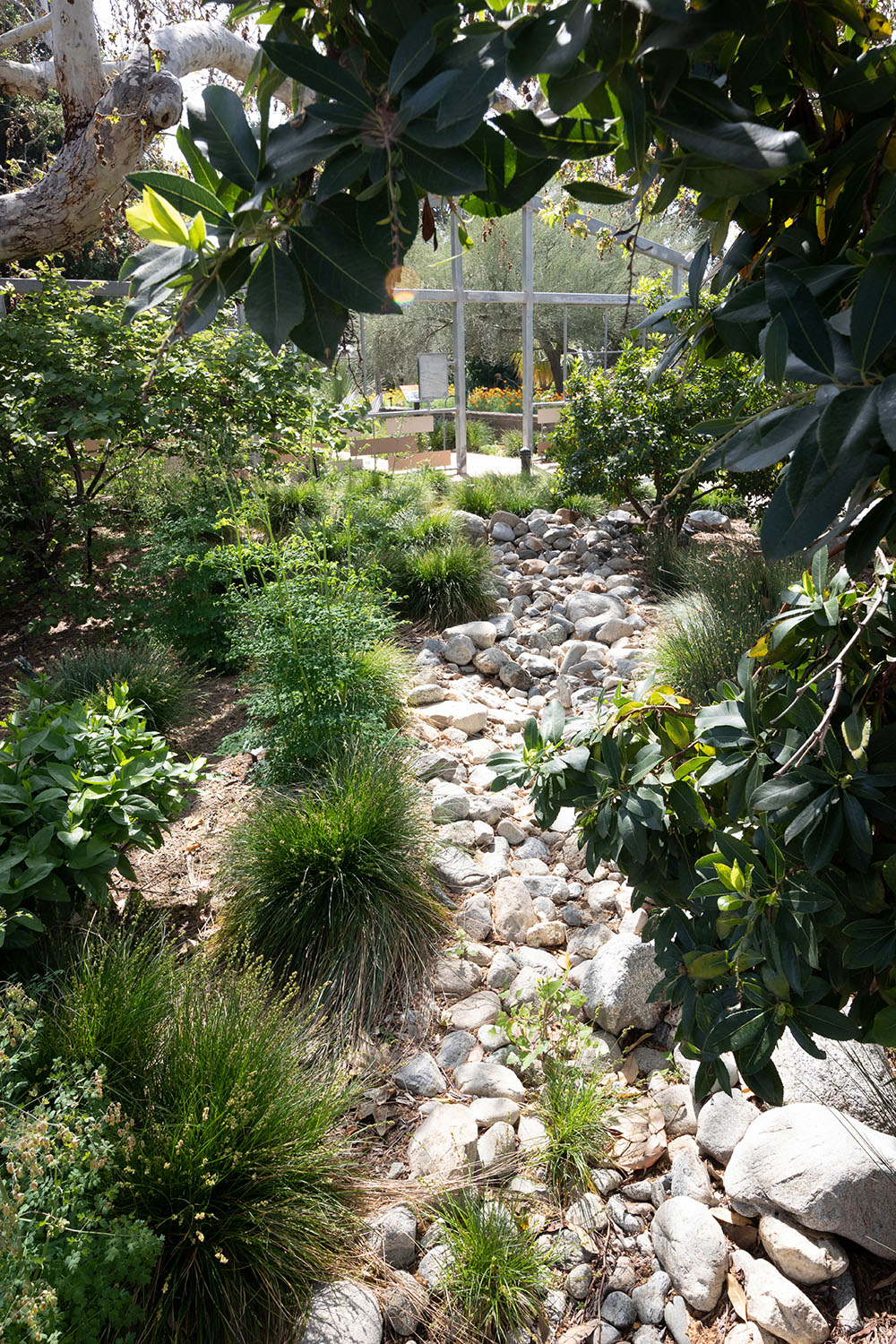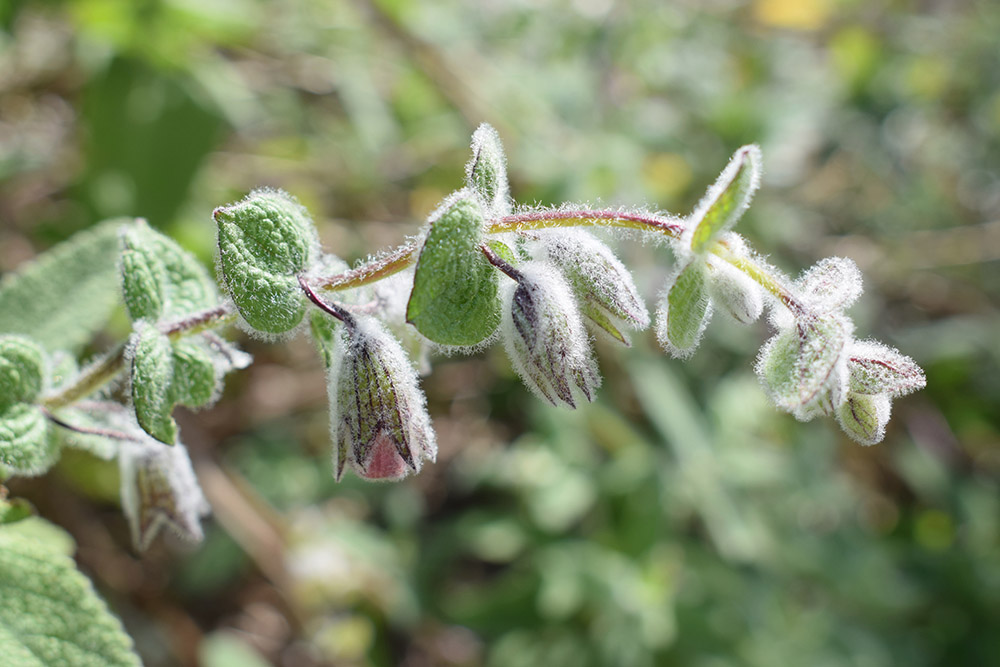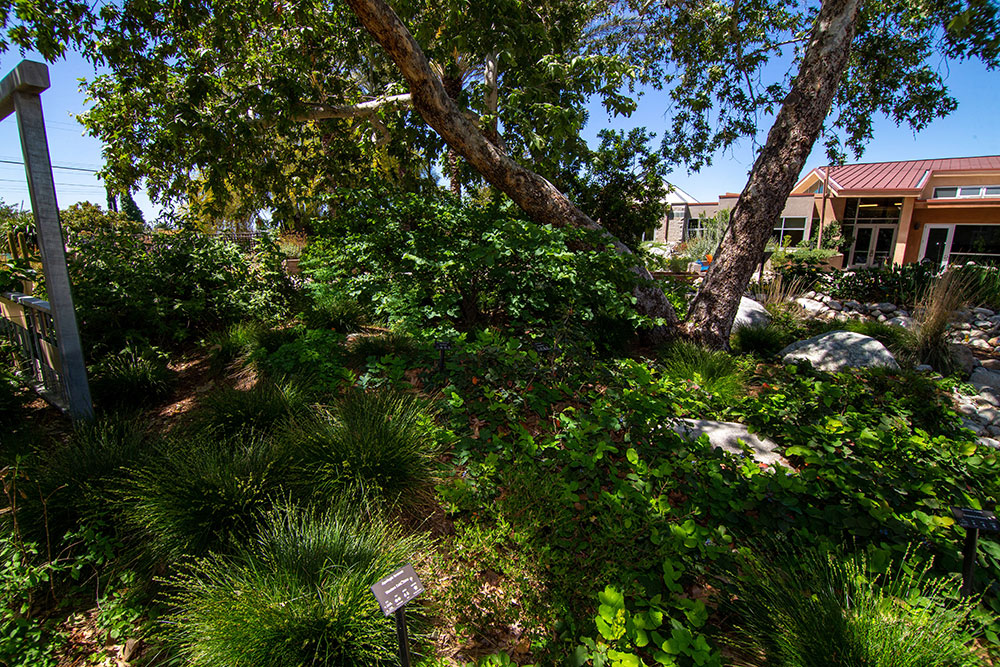Irrigation Options
Irrigation made easy
Irrigation is one of the most confusing parts of waterwise gardening. Find the irrigation technique that works for you. We offer additional in-depth information about each of these techniques through our free workshops and YouTube videos.
Hose-attached sprinklers
If you have the time to set up these as needed, hose-attached sprinklers are both efficient and inexpensive. You’ll need to find a sprinkler that works well for your space and a place to set it that will allow it to not be blocked by any plant material. For large spaces, we like high-quality oscillating sprinklers placed on top of a couple of milk crates to elevate them over nearby plant material. For smaller spaces, we like to place individual spray nozzles on adapter stands that allow them to be connected to hoses.
While hose-attached sprinklers do distribute water less evenly than drip systems, because you set them up each time means you will never have an ongoing leak that goes unnoticed, which is often the biggest issue with drip irrigation. Further, these options are far cheaper than permanent systems and require far fewer materials to manufacture. Hose-attached sprinklers are primarily considered for California native gardens, which, in most cases, will only need watering once every 3–4 weeks once established.
This approach does take far more time than permanent drip or spray systems, but if you like to spend time in your garden, it’s not necessarily a significant drawback.
Slow-drip hose with bubbler
For spot-watering of shrubs and trees, a slow-drip hose bubbler offers a simple and efficient yet time-consuming option. Another option for nonpermanent watering, this approach allows you to directly water exactly where plants are best watered. For new plantings, a slow-drip hose with bubbler allows you to ensure that each plant gets enough water to wet the current root ball and the area farther out to encourage root growth. For established plants, it allows you to target water exactly where plants will most readily gather moisture, near the edge of their canopy.
This option is best used for areas with only a few plants or oddly-shaped areas that cannot be watered efficiently with sprinklers. We often use hose-attached sprinklers for watering large garden areas in combination with hose bubblers for areas not reached by the sprinklers.
We also use slow-drip hose bubblers to provide additional water to newly planted and establishing plants added to larger established gardens that receive water less often.
If using this approach, it’s important to use a hose-attached water meter so that you are not applying more water than intended. Information about the parts we recommend combining for a hose-end bubbler kit, and how to best use it, is available here (link).
Drip grid
Often the best option for small or odd-shaped areas where permanent or automated irrigation is desired, drip grids use “in-line” drip-irrigation tubing in which individual emitters are already embedded at a regular spacing within a half-inch plastic line. Parallel lines of this tube are laid out in a specific pattern so that when they run, the entire soil area of the planting is evenly wetted, allowing the roots to gather water as if it had rained.
These in-line drip systems break far less often and are far healthier for plants than “button-emitter” drip systems, which place one or more individual drip emitters at the base of each plant. Button-emitter systems concentrate water unevenly, usually at the base of the plant, negatively affecting the plant’s root development and leaving it prone to rotting and other potential issues.
While drip grids are more time consuming and expensive to install than other drip-irrigation options, we consider them to be THE ONLY drip-irrigation approach with the potential to keep waterwise and native plants healthy long-term and to protect your investment in the rest of the garden. More inexpensive drip options don’t provide value if they compromise the health of your plants as they mature.
Compared to another permanent irrigation system option, high-efficiency rotating-spray sprinklers, drip grids have the advantage of never being blocked by growing plants, which results in uneven water distribution.
High-efficiency rotators (aka rotating-spray nozzles) on risers
Rotating sprays can be efficient and help plants thrive if installed appropriately. HIgh-efficiency rotators are specific highly efficient sprinkler nozzles that can be used instead of traditional inefficient spray nozzles. The traditional nozzles are inefficient because they produce a lot of mist and do not do a good job of distributing water evenly over the landscape. If it’s windy, much of the water may land in completely unintended areas. Known by a few related names—rotating nozzles, rotating sprays, or rotators—these devices are engineered differently than typical spray nozzles and create many rotating concentrated streams, some of which go farther than others. As they rotate, they create a highly even pattern of water distribution compared to traditional sprinklers.
For waterwise and native landscapes, however, placing rotating nozzles into traditional pop-up sprinklers can still result in blocked sprays, so we recommend elevating them by using solid pipe “risers” instead of burying pop-up sprinklers in the ground. While these risers can be seen, once a garden grows in, they are hardly noticed.
This approach has two advantages compared to drip irrigation. First, all the parts used are more durable than drip systems, so they are far less prone to breaks and leaks. Should a break or leak occur, elevating nozzles with risers makes it very easy to occasionally test or look for leaks, whereas breaks or leaks in drip systems buried in mulch often go unnoticed for long periods. Second, the way this approach provides water more closely mimics natural rainfall, which allows the pattern of leaves and branches of mature plants to channel the water to where it is best used by the plant and keeping the sensitive root-crown area a bit drier. The disadvantage compared to drip irrigation, however, is that sprinklers may need to be moved over time as a landscape grows in to avoid taller plants blocking too much of the spray. Drip is also the only recommended permanent irrigation system for areas less than 10 feet wide, which are difficult to water even with high-efficiency spray systems without watering the adjacent pavement as well.


